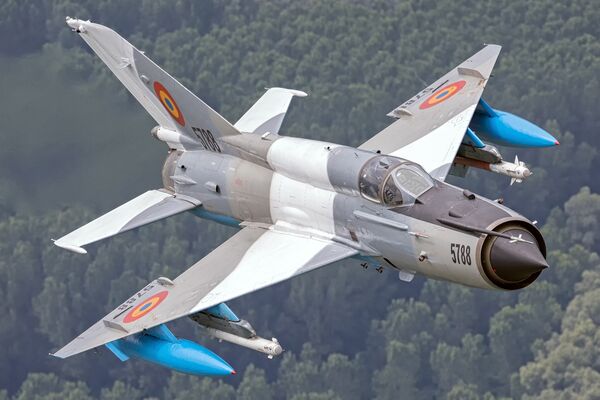In the annals of aviation history, few aircraft have achieved the iconic status of the MiG-21. Known as the “Fishbed” by NATO, this supersonic jet fighter has been a mainstay in the arsenals of over 60 countries since it first took to the skies in 1956. Despite being nearly seven decades old, the MiG-21 remains one of the most widely used fighter jets in the world, a testament to its enduring design and formidable capabilities.

A Revolutionary Design
When the MiG-21 was introduced by the Soviet Union, it was nothing short of revolutionary. With its sleek, delta-wing design, it was built for speed, agility, and simplicity. The aircraft could reach speeds of up to Mach 2, making it one of the fastest jets of its time. Its lightweight design and powerful engine allowed it to outmaneuver many of its contemporaries, earning it a reputation as a fearsome adversary in dogfights.
But what truly set the MiG-21 apart was its versatility. It was designed to be a multi-role fighter, capable of both air-to-air combat and ground attack missions. Its simple, rugged construction made it easy to maintain and operate, even in the most austere conditions. This made the MiG-21 an attractive option for countries around the world, especially those with limited resources.
A Global Presence
The MiG-21’s impact on global military aviation cannot be overstated. Over 11,000 units were produced, making it the most produced supersonic jet aircraft in history. It was exported to countries across Asia, Africa, and the Middle East, where it was used in numerous conflicts, from the Vietnam War to the Six-Day War.
In Vietnam, the MiG-21 earned a formidable reputation, achieving a kill ratio that outmatched many of the more advanced American aircraft it faced. Its ability to take off quickly, engage in high-speed interceptions, and then vanish into the skies made it a formidable opponent for U.S. pilots.

Still Going Strong
While many of its contemporaries have long since been retired, the MiG-21 continues to serve in air forces around the world. It has undergone numerous upgrades over the years, including modern avionics, improved weapon systems, and enhanced radar capabilities, allowing it to remain competitive in modern air combat scenarios.
Countries like India and China have kept the MiG-21 in service by developing their own indigenous upgrade programs. The Indian Air Force, for example, has upgraded its fleet of MiG-21s to the “Bison” standard, equipping them with beyond-visual-range (BVR) missiles and improved avionics. These upgrades have extended the aircraft’s operational life and kept it relevant in the 21st century.

A Symbol of Resilience
The enduring legacy of the MiG-21 is a testament to its design and the vision of its creators. It represents a unique chapter in aviation history, where simplicity and effectiveness were prioritized over complexity. For many nations, the MiG-21 is more than just a fighter jet; it is a symbol of resilience and a reminder of a time when raw speed and maneuverability ruled the skies.
As the MiG-21 continues to fly into the future, it serves as a living relic of the Cold War era, a machine that has witnessed the evolution of air combat and adapted to it. Its continued service is a tribute to its designers and the countless pilots who have flown it into combat, making the MiG-21 one of the most enduring legends of the jet age.





